Diagnosis by odour is nothing to be sniffed at, finds Ian Le Guillou
When she first received a call about a woman who claimed to be able to smell Parkinson’s disease, Perdita Barran was initially dismissive: ‘I said “Well, surely she’s perhaps just smelling old people.”’
Barran is a professor of mass spectrometry at the University of Manchester in the UK and has an interest in misfolded proteins like those found in the brains of people with Parkinson’s disease. However, Barran’s collaborator, Tilo Kunath at the University of Edinburgh, UK, had met the woman, a retired nurse called Joy Milne, and thought there might be something in it.
They decided to put Milne to the test. They presented her with 12 identical-looking T-shirts – six that had been worn by people with Parkinson’s and six that hadn’t. Milne sniffed her way through the T-shirts and picked out seven where she could recognise the smell of Parkinson’s disease. The researchers were stunned to realise that she had correctly identified all six cases of Parkinson’s, with only one false positive that came from the control group.
‘Well, they thought I’d incorrectly identified it, but I knew I hadn’t,’ says Milne. ‘I even stood my ground in that room saying “Oh well, we’ll see.”’
Three months later, Milne was proved right. The man who had worn the T-shirt as part of the control group had since been diagnosed with Parkinson’s. Since then, she has worked with Barran to home in on the chemicals that cause the smell. Barran says she has been inundated with stories from members of the public who have also noticed smell changes in people with Parkinson’s: ‘It’s resonated with a lot of people – there’s a visceral knowledge that odour is indeed diagnostic.’
Ancient smells
‘There are a number of smells which are definitely associated with diseases,’ says Jan van Meerbeeck, a professor of respiratory medicine at the University of Antwerp in Belgium.
Since ancient times, physicians have noticed a sweet smell in the urine and breath of people with diabetes. Failures of the liver or kidneys also alter the breath with fish-like and urine-like smells, respectively. These smells come from changes in the usual biochemical processes in the body, producing a variety of metabolites known as volatile organic compounds (VOCs) that disperse into the air.
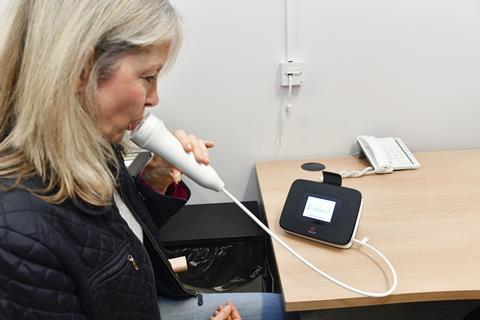
Although breathalyser tests for alcohol consumption are simple enough to be used by the roadside, smell tests to detect volatile molecules are rarely used in health. One of the few examples is a test for nitric oxide on the breath. High levels can indicate overactive eosinophils, a type of white blood cell, reflecting underlying asthma.
‘It’s not always easy to discriminate between some kinds of asthma versus an infectious cough,’ says van Meerbeeck.
While blood tests and imaging scans have become mainstays of modern medicine, the compounds that we release into the air around us have gone largely unnoticed. Perhaps that is due to a common disregard for our sense of smell, seeing it almost as a vestigial sense that is inferior to that of so many other animals. In The Descent of Man, for example, Charles Darwin wrote ‘The sense of smell is of extremely slight service, if any.’ Improvements in sensors, however, are sparking renewed interest in the area.
‘The advances in technology have made it interesting to further investigate exhaled breath because it is better at detecting the compounds at lower concentrations,’ says Kevin Lamote, a postdoctoral researcher in van Meerbeeck’s lab. ‘I guess that’s one of the reasons why it has boomed over the last decade.’
Smell library
‘I was born with this,’ says Milne. ‘So I have lived with this all my life and I presumed when I was younger that people could smell just as I did.’
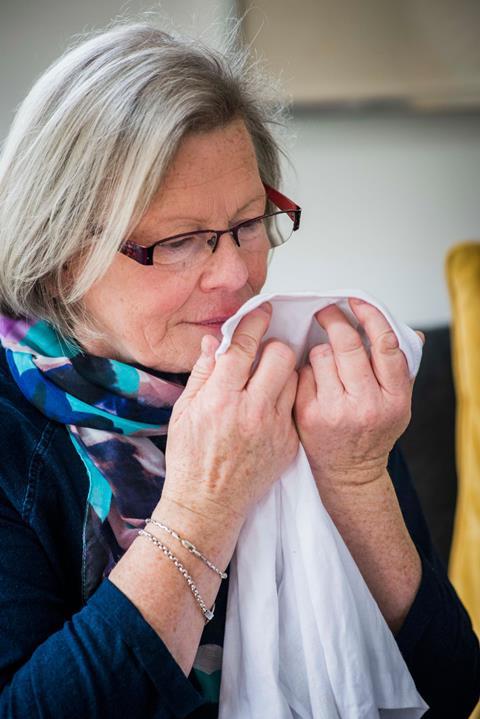
Milne’s grandmother and two sisters all had a keen sense of smell, but they didn’t have her experience of being in regular contact with disease. Milne’s years as a nurse built up what she calls her ‘olfactory library’ to recognise diseases ranging from ovarian cancer (‘It has a terrible smell’) to tuberculosis.
For her, this isn’t an ability that she can switch off. Even standing in a supermarket queue, Milne could pick up the signature smell of diabetes coming from the person in front of her. ‘Usually, you can tell from what they’re buying whether they know they’ve got diabetes or not!’ she says.
When Milne first noticed a musky smell coming from her husband Les, she just told him that he needed to wash more often. However, the smell wouldn’t go away and over time she learned to put up with it.
Twelve years later, Les was diagnosed with Parkinson’s disease at the age of 44. Attending an event run by the charity Parkinson’s UK, Milne suddenly made the connection that led her to Barran’s lab. ‘The big shock was walking into that room and thinking “Goodness, the people who don’t have Parkinson’s don’t smell; the people who do have Parkinson’s smell the same as Les.”’
Dysregulation
One of the interesting discoveries from the T-shirt test was that the smell was not coming from the armpits, where you might think smells would be the strongest. Instead, Milne was pinpointing the smell to the top of the back.
People with Parkinson’s produce excessive sebum, an oily substance secreted by the skin. This can cause skin problems, such as dermatitis and dandruff. It also is produced in high levels at the top of the back, where Milne had detected the tell-tale smell.
‘Sebum is a really interesting and very under-explored biofluid that is easily obtainable and appears to be very good at trapping odorous compounds,’ says Barran.
Thanks to Milne, Barran has isolated classes of compounds responsible for the smell that signifies Parkinson’s. ‘It turns out that we’re seeing dysregulation of lipids from the sebum of people with Parkinson’s,’ says Barran. ‘I think some of the pathways we’re uncovering may well lead to new therapies.’
Treatments are desperately needed for Parkinson’s. As a neurodegenerative disease, the outward symptoms are caused by the death of brain cells – cells that, once gone, cannot be recovered. Current treatments can help to mask the symptoms temporarily but there is still no way to stop the destruction in the brain.
‘At the moment, there’s only palliative care. Nothing is making what is in the body better. The destruction is going on but the side effects from the palliative care drugs are horrendous. So if they can diagnose it earlier, look at the VOCs, look at all this molecular destruction and treat it, then they’re treating the disease,’ says Milne.
Screening by smell
Just like Milne smelled a change in her husband over a decade before his diagnosis, the hope is that these volatile compounds could identify the disease earlier. Many people take years to get a diagnosis, living with unexplained behaviour changes and gut problems in the meantime, causing stress and difficulties for them and their families.
‘The time between experiencing those first symptoms and developing Parkinson’s disease can be very difficult,’ says Barran.
Currently, diagnosis of Parkinson’s disease is based on an examination by a neurologist. There is no test that can conclusively give a diagnosis. Barran and her colleagues are now testing their Parkinson’s VOCs signature by taking swabs from people referred to a neurologist with possible Parkinson’s and then comparing the results with the diagnosis given.
For Parkinson’s, the interval between exposure and disease is 30 years or even more
If that’s successful, she hopes it could be part of the diagnostic pathway, providing an analytical test for Parkinson’s. This would raise the possibility of a screening programme, and Barran describes offering a test to everyone over 60 as an ambition of hers.
Beyond Parkinson’s, VOCs could be used in a range of diseases to quickly screen people at high risk. One such group of people are workers who were exposed to asbestos and now face an increased risk of mesothelioma.
‘The interval between exposure and disease is 30 years or even more,’ says van Meerbeeck. Despite bans on asbestos use now in place in many countries, ‘we might expect that the effects of professional asbestos exposure might still be present for another 10 to 15 years, at least in western countries’, he explains. ‘It is mostly diagnosed in the advanced stage, where there is no cure possible. So by advancing the moment of diagnosis to an earlier stage, you might perhaps offer those patients radical treatment which might be curative.’
Van Meerbeeck says that breath tests being developed using VOCs often have a high negative predictive value, meaning that they are good at ruling out disease in people. That means, rather than being relied on for a diagnosis, these tests would form part of the clinical pathway to select high-risk individuals for further tests. The other advantage is that breath tests could provide results within minutes, compared to waiting for days for blood tests results in primary care.
The growing interest in the field has come not just from the advances in technology, but also a better understanding of the disease. Studies of metabolic pathways disrupted in cancer show that it would be theoretically possible to design a breath test.
‘By doing the pathway analysis, people started to recognise that some metabolites were induced by changes due to disease and some of these are volatile,’ says Lamote.
Metabolic by-products
Volatile compound detection could have widespread impact in medicine, as dysregulation of metabolism is a marker for many diseases. ‘Insulin controls all sorts of things,’ explains Mark Evans, who studies diabetic medicine at the University of Cambridge, UK. ‘It controls electrolyte balance; it controls protein and fat metabolism.’
Without insulin to suppress fat metabolism, the body produces lots of ketones as a by-product, leaving the smell of acetone on the breath. This can be a good way to monitor the health of someone with diabetes but is less useful for monitoring blood sugar levels.
The devices have come on such a long way that they perform better
When doing breath analysis of people with diabetes, Evans found that a compound called isoprene increases in concentration when blood sugar levels fall.
‘It’s a by-product of cholesterol metabolism; that’s about the most that people can say about it. It seems to be produced as a spin-off of the pathway,’ says Evans. ‘A number of lipid experts I’ve spoken to can’t tell me any more about exactly why that should be.’
Although isoprene could be a valuable and straightforward marker to easily monitor with a breath sensor, the challenge, Evans says, is offering an advantage over existing technology. ‘If you compare this side by side with the current generation of medical devices, which are minimally invasive devices that sit just under the skin and measure interstitial glucose in real-time, those devices have come on such a long way that they perform better,’ he explains.
‘We’ve now got devices which measure in real-time, push alerts through to smartwatches and phones and share with parents and loved ones. They’ve got algorithms to predict from the direction of travel when blood glucose is dropping to give people a little nudge on the way down,’ Evans says.
Detection and diagnosis
While isoprene and nitric oxide may be good volatile markers for monitoring diabetes and asthma, respectively, Lamote says that we can’t expect to find one compound for each disease. ‘It will be biomarker panels that will make sure that we can differentiate disease from healthy controls,’ he says.
So far, Lamote and van Meerbeeck have identified a panel of compounds linked to mesothelioma cases. They are now planning to validate this panel in a new group of people before testing its diagnostic role in the clinic.
‘In a multicentre study with thousands of patients, you have an almost limitless number of metabolites that you see in exhaled breath, and you have to pinpoint just those ones that are related to disease,’ says Lamote.
If you want to bring it to the clinic, we have to know the compounds
The Belgian team use different technologies to sample the breath. Ion mobility mass spectrometry allows the patient to breathe directly into the machine with results within 10 minutes. However, the technique is less accurate for identifying specific molecules. By contrast, gas chromatography–mass spectrometry offers more certainty on chemical identification, but samples have to be collected from the patient and sent for analysis. Handheld sensors would be straightforward to use but need more work to ensure they can detect compounds precisely and reliably.
‘If you want to bring it to the clinic, we have to know the compounds in order to make specific handheld sensors that can allow the detection of the compounds of interest,’ says Lamote.
Barran and her team use a mass spectrometer with an odour port. As the compounds are separated off the gas chromatography column, a portion goes to the detector and some goes to Milne.
‘That technology exists; it’s used predominantly in the perfume industry where people want to take natural products and determine which components have the odour that would be blended into perfume,’ says Barran. ‘I guess what we’ve done that’s different is to take that concept and apply it to a health challenge.’
The noses have it
In the perfume or whisky industry, professional smellers, or ‘noses’, play a crucial role. However, biological noses are limited. Milne gets saturated after 5–10 samples and has to change her shirt three times during a day to remove the build-up of smells.
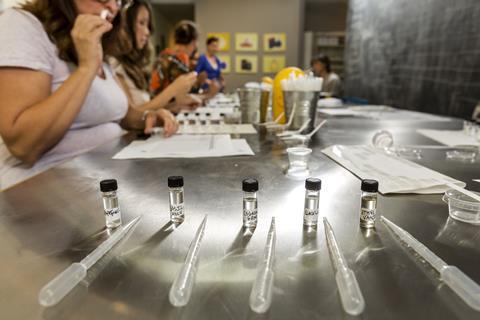
‘It won’t scale for clinical assays,’ says Barran. ‘I think mass spectrometry actually will be economically viable for doing this, and I think it will be the best way of doing it. It’s OK for Glenfiddich or Chanel to employ noses because the value of the odour is so much to them.’
From stethoscopes to MRI scanners, new medical technologies enhance doctors’ senses and improve diagnosis. Perhaps if more of us had Milne’s sense of smell, we would already have odour-detecting diagnostic machines – or perhaps we wouldn’t even need them. Once teams like Barran’s or van Meerbeeck’s show the clinical benefit of a ‘smell’ test, it’s not hard to imagine that versions for many more diseases will soon follow. At least, that is, if Milne’s olfactory library is anything to go by.
Milne’s abilities have taken her around the world, from sniffing cancer in California to tuberculosis in Tanzania. However, her favourite meeting was with other ‘noses’ at an international fragrance conference: ‘It was so interesting to listen to how they perfected their learning, and they call it perfecting the nose. You see, I had 40 odd years of nursing to perfect it.’
Ian Le Guillou is a science writer based in Paris, France


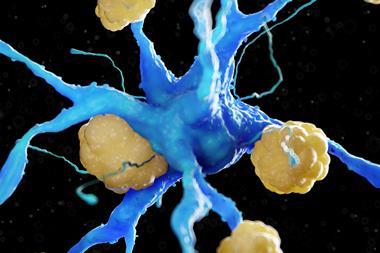

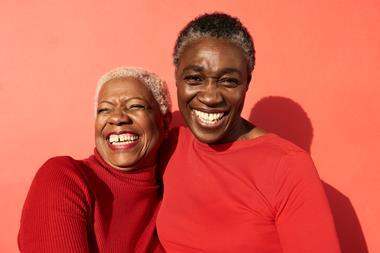
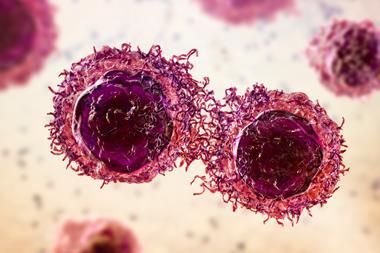







No comments yet